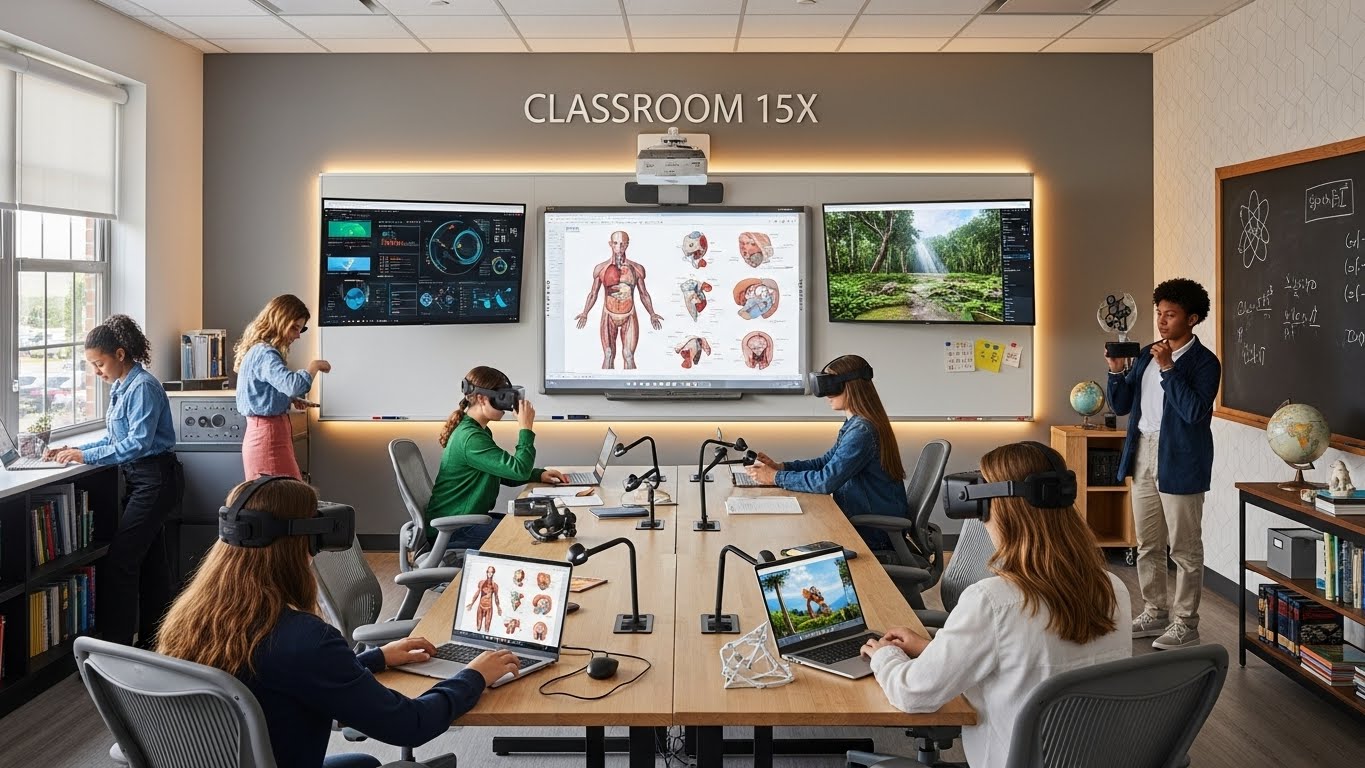Archives
Italy: Off the Beaten Path Destinations

Italy is a country that conjures up images of grand cities, stunning art, and culinary delights. But beyond the iconic landmarks lies a treasure trove of hidden gems waiting to be discovered. From charming towns steeped in history to idyllic islands untouched by mass tourism, Italy offers countless off-the-beaten-path destinations perfect for those seeking authentic experiences. Whether you dream of wandering through quaint streets or savoring local flavors away from the crowds, this guide will take you on an adventure through some of Italy’s most enchanting locales. Get ready to uncover the lesser-known wonders that make this beautiful country even more captivating!
Exploring the Charming Town of Alberobello
Alberobello is a magical destination tucked away in the Puglia region of Italy. Renowned for its iconic trulli, these cone-shaped stone houses create a fairytale ambiance that captivates every visitor.
Strolling through the narrow streets feels like stepping back in time. Each trullo has its own charm, adorned with unique symbols and features. The whitewashed walls glisten under the Italian sun, inviting endless photography opportunities.
Local shops offer handmade crafts and delicious treats. Don’t miss tasting traditional almond pastries or sipping local wine while soaking up the relaxed atmosphere.
As evening descends, the town transforms into a romantic setting illuminated by soft lights. The quiet hum of conversation fills the air as locals gather to share stories and laughter.
Exploring Alberobello offers not just sights but an experience woven with culture and history that lingers long after you leave this enchanting place.
The Enchanting Island of Procida
Procida, a gem in the Bay of Naples, beckons with its vibrant colors and authentic charm. Unlike its more famous neighbors, this small island offers an intimate escape away from the bustling tourist traps.
Wander through narrow streets lined with pastel-hued houses that seem to dance in the sunlight. The aroma of fresh seafood wafts from local trattorias, inviting you to indulge in traditional dishes made with love.
Visit Marina Corricella—an ancient fishing village where time stands still. Its picturesque harbor is dotted with boats swaying gently at anchor. Capture stunning photos or simply soak up the tranquil atmosphere.
Don’t miss Procida’s beaches; they are serene havens perfect for sunbathing or dipping your toes into crystal-clear waters. Each corner reveals new surprises, immersing you deeper into Italian culture and lifestyle—a true paradise waiting to be explored.
Discovering the Beauty of Cinque Terre
Cinque Terre is a picturesque collection of five vibrant villages perched along the rugged Italian coastline. Each town has its own charm, bursting with color and history.
Riomaggiore greets visitors with narrow streets that wind down to the sea. The stunning views from this village are breathtaking at sunrise or sunset.
Manarola, known for its Instagram-worthy spots, offers delightful trails connecting it to neighboring towns. Hiking enthusiasts find joy in the scenic paths here.
Vernazza stands out with its medieval tower overlooking a quaint harbor. This spot invites travelers to relax at local cafes while savoring fresh seafood.
Corniglia sits atop cliffs, providing panoramic vistas that make every step worthwhile. Its unique position is perfect for those who appreciate dramatic landscapes.
Monterosso al Mare boasts sandy beaches where you can unwind after exploring these captivating coastal gems.
Off the Grid in Sicily’s Aeolian Islands
The Aeolian Islands offer a serene escape from the bustling mainland of Italy. This volcanic archipelago is a paradise for those seeking tranquility and natural beauty. Each island has its own character, just waiting to be explored.
Lipari, the largest island, boasts stunning beaches and rich archaeological sites. You’ll find charming streets lined with local shops and eateries serving fresh seafood caught that morning.
Vulcano presents an opportunity for adventure. Hike up to the crater for panoramic views or relax in one of its famous mud baths. The therapeutic properties are simply rejuvenating.
Salina enchants visitors with lush landscapes and exquisite capers. Here, quaint villages invite you to unwind as you sip on local wine while gazing at breathtaking sunsets.
Traveling between these islands feels like stepping into another world. Ferries connect them seamlessly, allowing spontaneous discoveries around every corner without the crowds found elsewhere in Italy.
Embracing History in Matera’s Sassi District
Matera’s Sassi District is a captivating journey through time. The ancient cave dwellings carved into limestone hills tell stories of resilience and adaptation.
Wandering through the narrow streets, you can almost hear echoes of centuries past. Each stone has witnessed the lives of generations. This UNESCO World Heritage site boasts homes that date back to prehistoric times.
As you explore, discover charming cafes nestled within caves, where locals serve traditional cuisine. The unique architecture creates an atmosphere unlike any other place in Italy.
The breathtaking views from the cliffs offer stunning panoramas at sunset. You’ll find yourself enchanted by how history blends seamlessly with everyday life here.
Artisans continue age-old crafts while modern galleries showcase contemporary works. Matera embraces its heritage while evolving into a vibrant cultural hub, making it a must-visit for lovers of history and art alike.
Final Thoughts: Why You Shouldn’t Miss These Hidden Gems in Italy
Italy is a treasure trove of hidden gems waiting to be discovered. Beyond the iconic landmarks and bustling cities, lie charming towns and breathtaking landscapes that capture the essence of Italian culture.
Exploring destinations like Alberobello offers a glimpse into unique architecture with its trulli houses. The enchanting island of Procida provides a colorful escape filled with serene beaches and authentic local life. Meanwhile, Cinque Terre showcases stunning coastal views that will leave you in awe.
Venture off the grid to Sicily’s Aeolian Islands for volcanic landscapes and tranquil vibes. And don’t overlook Matera’s Sassi district, steeped in history with its ancient cave dwellings.
These hidden spots allow you to experience Italy in a more intimate way. Each destination tells its own story, rich with tradition and beauty. If you’re seeking an adventure that’s both enriching and picturesque, these locations are not to be missed on your next trip to Italy. Embrace the unexpected; it just might become your favorite part of this enchanting country.
Archives
SwindleTrilogy.com/: The Vision and Creation Process

Welcome to the world of Swindle Trilogy, where creativity meets ambition. This unique project has taken shape through inspiration, hard work, and a passion for storytelling. As you dive into this blog post, prepare to explore the fascinating journey behind swindletrilogy.com/. From its inception to its vibrant illustrations and engaging narratives, there’s much more than meets the eye. Join us as we unveil the vision that sparked it all and discover what makes this trilogy truly special. Whether you’re an aspiring writer or simply curious about creative processes, you’re in for an exciting ride!
The Inspiration Behind the Creation
Every great story begins with a spark of inspiration. For Swindle Trilogy, that spark ignited from the joys and complexities of human relationships.
The creators drew from personal experiences, blending memories and emotions into a vivid tapestry. They explored themes of trust, betrayal, and redemption—elements that resonate deeply with readers.
Nature also played a crucial role. Scenic landscapes inspired settings that come alive on the page. Each illustration is crafted to evoke feelings tied to those places.
Cultural influences shaped characters’ personalities and decisions too. The diversity enriches the narrative, making it relatable across different audiences.
The inspiration behind Swindle Trilogy was about connecting with readers on multiple levels. It’s an invitation to reflect on life while embarking on an unforgettable adventure through words and art.
The Vision for Swindle Trilogy
The vision for Swindle Trilogy is both imaginative and bold. It seeks to transport readers into a world teeming with mystery, adventure, and unexpected twists.
At its core, the trilogy aims to explore themes of trust and deception. Each character grapples with their motivations, making choices that challenge their morals. This complexity adds depth to the story.
Visually, there’s an emphasis on vibrant illustrations that complement the narrative. The artwork serves not just as decoration but enhances the emotional tone of each scene.
Readers will find themselves questioning what lies beneath the surface of every interaction. The goal is to create an immersive experience that lingers long after they’ve turned the last page.
Every chapter unfolds layers of intrigue while keeping audiences engaged throughout their journey in this captivating universe.
The Writing and Illustration Process
The writing and illustration process for Swindle Trilogy has been an exhilarating journey. Each page starts as a blank canvas, waiting to be filled with vibrant stories and captivating visuals.
Drafting the narrative is where the magic begins. Ideas flow freely, shaped by character arcs and plot twists. Every word matters, creating a world that draws readers in.
Illustration adds another layer of depth. Collaborating with talented artists brings characters to life vividly. Their unique styles enhance the story’s mood, making each scene memorable.
Feedback loops play a crucial role too. Early readers provide insights that refine both text and illustrations. This collaboration fosters creativity, ensuring every element resonates deeply.
Time management poses its own challenges during this phase. Balancing deadlines while maintaining quality requires focus and dedication from everyone involved in bringing the trilogy to fruition.
Challenges Faced during Creation
Creating the Swindle Trilogy was not without its hurdles. One of the most significant challenges was maintaining a consistent storyline across all three parts. Each book needed to stand alone while also weaving seamlessly into a larger narrative.
Time management proved tricky, too. Balancing writing with illustrations required careful planning and dedication. There were nights spent rewriting chapters after realizing they didn’t quite capture the intended emotion or plot twist.
Collaboration posed another obstacle. Working closely with illustrators meant aligning visions and ideas, which sometimes led to creative differences that had to be navigated thoughtfully.
Facing self-doubt during the process was unavoidable. Questions about whether readers would connect with characters lingered in every draft stage, pushing for continuous improvement yet creating pressure at every turn.
Future Plans for Swindle Trilogy
The future of Swindle Trilogy is brimming with excitement. Plans are in motion to expand the universe, introducing new characters and thrilling plots. Readers can expect twists that challenge their perceptions and keep them guessing.
A graphic novel adaptation is also on the horizon. This will bring a visual flair to the story, allowing fans to experience it in an entirely new way. Artists are brainstorming concepts that resonate deeply with existing themes while adding fresh perspectives.
Engagement with fans remains a top priority. Interactive events may be hosted online, creating spaces for discussions and fan theories about character arcs and potential spin-offs.
Collaborations with other authors or creators could further enrich the trilogy’s world. These partnerships promise unique storytelling elements that enhance its depth, making every journey captivating for readers old and new alike.
Conclusion and Final Thoughts
The journey of Swindle Trilogy has been both exciting and enlightening. From its humble beginnings, the series has captured the hearts of readers with its unique blend of storytelling and artistry. It is a testament to creativity’s power to inspire connections among diverse audiences.
As we look ahead, there are endless possibilities for growth and expansion. Plans for future books, interactive experiences, or even adaptations continue to swirl in the minds behind SwindleTrilogy.com/. Each step forward aims not just to entertain but also engage fans on deeper levels.
This project reflects more than just a story; it embodies passion, perseverance, and community spirit. The dedication invested in each page echoes through every reader’s response. With an ever-evolving narrative landscape ahead, one can only anticipate what’s next for this remarkable trilogy.
Archives
Class30x: Revolutionizing the Learning Experience

In a world where technology is reshaping every aspect of our lives, education is no exception. Enter Class30x, an innovative platform designed to transform the learning experience for students and educators alike. This cutting-edge solution combines traditional teaching methods with modern technology, fostering engagement like never before. Imagine a classroom where interactive lessons spark curiosity and collaboration becomes second nature. With Class30x at the forefront, that vision is becoming a reality. Let’s dive deeper into how this revolutionary approach is changing the landscape of education as we know it.
The Innovative Features of Class30x
Class30x brings a fresh approach to education with its cutting-edge features. At the core is an intuitive user interface that keeps students engaged and focused on learning.
Real-time collaboration tools enable seamless interaction between teachers and peers. This fosters an environment of teamwork, where ideas can flourish without barriers.
Personalized learning paths let students progress at their own pace. Class30x analyzes individual performance, providing tailored resources that cater to unique strengths and weaknesses.
Interactive multimedia content enhances traditional lessons. Videos, quizzes, and gamified elements transform standard curriculum into captivating experiences.
Accessibility stands out as another vital feature. Whether from a tablet or laptop, students can connect anytime, anywhere—breaking down geographical limitations in education.
These innovative facets position Class30x not just as a tool but as an essential partner in modernizing the educational landscape for every learner involved.
Benefits of Using Class30x for Students
Class30x offers students a dynamic learning environment. It breaks away from the monotony of traditional education methods.
One standout benefit is personalized learning paths. Each student can progress at their own pace, ensuring they grasp concepts thoroughly before moving on.
Collaboration also flourishes within Class30x. Students interact with peers and instructors in real-time, fostering teamwork and communication skills that are essential for future success.
Engaging multimedia resources further enhance understanding. Videos, interactive quizzes, and gamified lessons make learning enjoyable and memorable.
Accessibility is another key advantage. Whether on a computer or mobile device, students can access materials anytime, anywhere. This flexibility accommodates various schedules and learning styles effectively.
Class30x encourages self-directed learning. By empowering students to take charge of their education journey, it cultivates independence and confidence in academic pursuits.
How Class30x is Changing the Traditional Classroom Setting
Class30x is redefining the boundaries of traditional education. In a conventional classroom, learning often feels one-dimensional. Class30x introduces an interactive platform that fosters collaboration and engagement among students.
Gone are the days of passive listening. With real-time feedback and dynamic content delivery, learners become active participants in their education journey. This shift promotes deeper understanding and retention of knowledge.
Teachers also benefit from this innovation. They can customize lessons based on individual student needs, making it easier to address diverse learning styles within a single classroom setting.
Moreover, Class30x breaks geographical barriers. Students from various parts of the world can connect and collaborate seamlessly, enriching their educational experience with diverse perspectives.
By integrating technology into daily learning routines, Class30x encourages critical thinking and problem-solving skills essential for success in today’s fast-paced world.
Success Stories from Schools and Students Using Class30x
One school that embraced Class30x reported a remarkable transformation in student engagement. Teachers noticed an increase in participation during lessons, with students eagerly contributing ideas and collaborating on projects.
In another instance, a high school senior shared how Class30x helped her grasp complex subjects. With interactive features and personalized learning paths, she felt empowered to tackle challenging material at her own pace.
A middle school principal highlighted improved test scores since implementing Class30x. Students who once struggled now excelled, thanks to the platform’s tailored resources that cater to diverse learning styles.
Even parents are singing praises. They appreciate seeing their children excited about education again. The sense of community fostered by Class30x has created stronger connections between families and schools.
These success stories illustrate just how powerful innovative tools can be when integrated into education systems. Students thrive when given the right environment to learn and grow.
Future Plans for Class30x and Expansion
Class30x is on the verge of exciting developments. The team envisions an expanded platform that incorporates more interactive tools and resources for educators and learners alike.
Plans include integrating advanced AI features to personalize learning experiences further. This will help tailor content to individual student needs, fostering a more effective educational journey.
Additionally, Class30x aims to partner with schools across various regions, broadening its reach. By collaborating with educational institutions globally, they seek to enhance accessibility and inclusion in learning environments.
Mobile applications are also part of the future roadmap. A dedicated app would allow students to access lessons anytime, anywhere—ideal for today’s fast-paced world.
Community engagement initiatives are expected as well, encouraging feedback from users to guide development priorities closely aligned with user needs and preferences.
Conclusion: The Future of Education is Here with Class30x
The landscape of education is evolving rapidly, and Class30x stands at the forefront of this transformation. With its innovative features designed to enhance learning experiences, it is making significant strides in redefining how students interact with their studies.
Class30x empowers learners to engage actively and take ownership of their education. As schools continue to embrace this platform, we see a shift toward more personalized and effective learning environments. The success stories pouring in from various institutions only reinforce the impact that Class30x has on student performance and motivation.
Looking ahead, Class30x plans to expand its offerings further by integrating advanced technologies like AI-driven analytics and personalized content delivery. This vision ensures that every learner can thrive in an increasingly digital world.
Education is no longer confined within traditional walls; it’s becoming more accessible than ever before. With platforms like Class30x leading the charge, students everywhere have exciting opportunities ahead as they navigate their academic journeys.
Archives
Classroom 15X: Bridging Technology and Traditional Learning Environments

Welcome to the future of education: Classroom 15X. Imagine a space where traditional learning meets cutting-edge technology, creating an environment that fosters creativity, collaboration, and engagement. This innovative approach brings together the best of both worlds—combining face-to-face interactions with digital tools that enhance the learning experience. As we navigate through this new paradigm, it’s essential to explore how Classroom 15X can transform our educational landscape for students and teachers alike. Are you ready to discover what lies ahead? Let’s dive in!
The Benefits of Integrating Technology in the Classroom
Integrating technology in the classroom transforms learning experiences. It engages students in ways that traditional methods often cannot achieve.
With digital tools, educators can tailor lessons to meet diverse needs. This personalization boosts understanding and retention of information. Students learn at their own pace, which fosters independence and confidence.
Technology also enhances collaboration among peers. Tools like online discussion forums and group projects encourage teamwork, even beyond school hours. This not only builds social skills but prepares them for future workplaces.
Access to a wealth of resources is another significant advantage. From interactive simulations to educational videos, technology opens doors to various learning materials that enrich curriculum content.
Furthermore, integrating technology helps develop critical thinking skills. Students analyze data, evaluate sources, and solve complex problems using real-world applications—skills essential for life beyond the classroom walls.
Traditional vs. Technology-Driven Learning Environments
Traditional learning environments often rely on lectures, textbooks, and rote memorization. Students sit in rows, absorbing information from the teacher at the front of the classroom. This method has its merits but can limit engagement.
In contrast, technology-driven classrooms encourage interaction. Tools like tablets and smartboards change how students learn. They promote collaboration and hands-on experiences that are often missing in traditional settings.
Technology also caters to diverse learning styles. Visual learners thrive with multimedia presentations while kinesthetic learners benefit from interactive simulations.
Furthermore, access to online resources expands knowledge beyond textbooks. Students can explore various topics at their own pace.
However, technology does present challenges such as over-reliance on devices or distractions from social media and games. Balancing these elements is key to creating an effective educational experience tailored for today’s needs.
Successful Examples of Classroom 15X Implementation
Several schools have embraced the classroom 15X model with impressive results. In a suburban high school, teachers integrated virtual reality into history lessons. Students explored ancient civilizations firsthand, enhancing engagement and retention.
Another notable example comes from an urban middle school that adopted interactive learning platforms for math instruction. The shift led to improved test scores and increased student participation in discussions.
A rural elementary school utilized tablets to facilitate personalized reading programs. Teachers could tailor content based on individual student needs, fostering a love of learning among young readers.
These examples highlight how diverse educational settings can effectively implement technology alongside traditional methods. Each case demonstrates that creativity and adaptability are key components of successful classroom 15X environments.
Potential Challenges and Solutions
Implementing Classroom 15X can present several challenges. One common hurdle is resistance from educators who are accustomed to traditional methods. Change can be daunting, but providing training and ongoing support helps ease this transition.
Another issue could be the disparity in access to technology among students. Schools must ensure all learners have equal opportunities by investing in devices or establishing partnerships with tech companies for resources.
Moreover, integrating technology requires a shift in curriculum planning. Teachers may need guidance on how to effectively blend digital tools with their lessons, ensuring that engagement doesn’t outweigh educational value.
Maintaining student focus amidst numerous online distractions is crucial. Setting clear expectations and utilizing monitoring software can help keep students accountable while they navigate digital learning environments.
How to Create a Classroom 15X Environment?
Creating a Classroom 15X environment starts with a clear vision. Identify the key technologies that can support your teaching goals. This could range from interactive whiteboards to tablets and educational software.
Next, ensure that all students have access to these tools. Equity in technology use is crucial for maximizing engagement. Consider implementing a bring-your-own-device policy or providing school-owned devices.
Foster collaboration by designing spaces where students can work together easily. Arrange seating to encourage discussion and teamwork while incorporating flexible furniture that adapts to different activities.
Professional development plays an essential role too. Train educators on integrating technology effectively into their lesson plans, ensuring they feel comfortable using new tools.
Solicit feedback from both teachers and students regularly. Their insights are invaluable in refining the classroom experience as you move forward with the Classroom 15X model.
Conclusion: The Future of Education with Classroom 15X
The future of education is bright with the advent of Classroom 15X. This innovative approach merges technology and traditional teaching methods, creating a dynamic learning environment that prepares students for the challenges ahead.
As we continue to embrace digital tools, educators can craft lessons that are not only engaging but also tailored to meet individual student needs. The integration fosters collaboration, critical thinking, and creativity—essential skills in today’s world.
While challenges may arise during implementation, they are opportunities for growth and improvement. By addressing these hurdles head-on with strategic solutions, schools can truly transform their classrooms into thriving ecosystems of learning.
Classroom 15X isn’t merely a trend; it represents a shift towards more inclusive and effective educational practices. As institutions adopt this model, we will likely witness remarkable advancements in student engagement and success rates.
With ongoing innovation in technology paired with dedicated educators at the helm, Classroom 15X could very well define the future landscape of education—a place where every learner has access to resources that broaden horizons and ignite passion for knowledge.
-

 Cast7 months ago
Cast7 months agoRico Rodriguez
-

 Episode Guide7 months ago
Episode Guide7 months agoHalloween episodes
-

 Cast7 months ago
Cast7 months agoCast
-

 Guest Star7 months ago
Guest Star7 months agoValentine’s Day episodes
-

 Cast7 months ago
Cast7 months agoWho is your favourite character?
-

 Guest Star7 months ago
Guest Star7 months agoGuest Star: Khamani Griffin
-

 Cast7 months ago
Cast7 months agoSarah Hyland
-

 Episode Guide7 months ago
Episode Guide7 months agoEpisode Guide : Season 1
